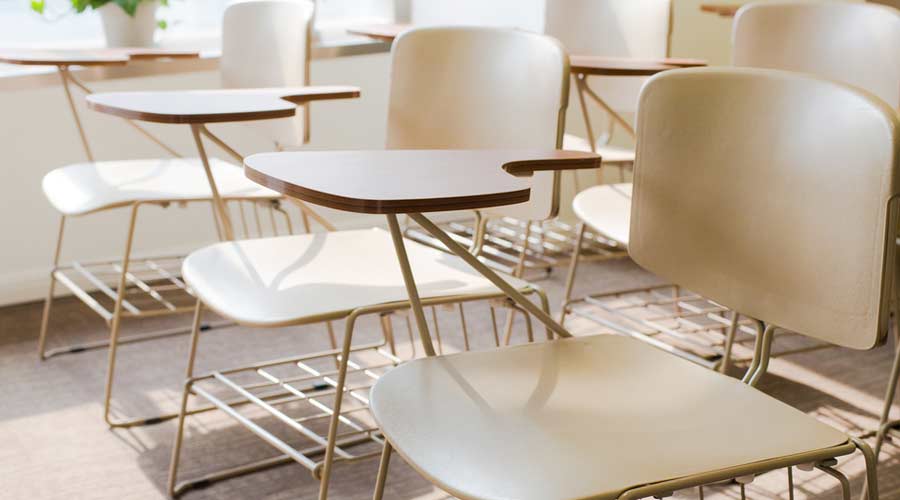
The first days of school are now behind us, and students and staff are settling in. Unfortunately, so are germs, viruses and bacteria. To keep school environments safe for occupants, Facility Cleaning Decisions reached out to Josh Feinberg, president of The Cleaning Coalition of America to discuss strategies custodial professionals can implement.
FCD: What should school administrators be doing to assure parents and faculty that classrooms are safe in the absence of many pandemic-era measures? How can cleaning executives and professionals help support and/or steer this messaging for administrators?
FEINBERG: With the new school year upon us and the latest variant of COVID-19 being reported as the most transmissible strain to date, it is more important than ever that school administrators adopt a multi-layered approach to cleaning to keep students and faculty safe.
The pandemic has caused a severe disruption to our education system, and educators must invest in health and safety strategies to ensure that this school year goes on uninterrupted. As cleaning professionals, it is our role to help guide school leaders to make the best decisions for their facility. With COVID-19 primarily spreading through air particles, it is critical that schools prioritize improvements to indoor air quality and reevaluate their current infrastructure.
To improve classroom air quality, administrators must first create a clean indoor air action plan that assesses current indoor air quality, plans for upgrades and improvements, and includes regular HVAC inspections and maintenance. Once a plan is in place, the next step is to optimize fresh air ventilation by bringing in and circulating clean outdoor air indoors, enhance air filtration and cleaning using the central HVAC system and in-room air cleaning devices, and engage the building community by communicating with occupants to increase awareness, commitment, and participation.
FCD: How can cleaning and disinfecting supplement improvements to indoor air quality, and how can cleaning professionals best share these facts with parents and faculty?
FEINBERG: Congregate settings — like schools and offices — are breeding grounds for disease-causing pathogens, with many people frequently touching shared objects and surfaces. For example, studies show that contamination of a single commonly touched surface in a workplace can impact 40 percent to 60 percent of other surfaces in an area in less than half a day. If just a single person comes into work sick, more than half of commonly touched surfaces such as doorknobs and shared buttons can become contaminated.
Schools present a unique challenge, given that many students are often confined to tight spaces or even share the same desk. Disinfecting large surface areas to complement the scope enhancements and increased frequencies of high-touchpoint cleaning and disinfecting will be an asset to schools as they formulate their health and safety plans — especially with flu season peaking in late fall and winter.
To help keep parents and faculty informed, cleaning professionals must also prioritize clear and consistent communication through classroom signage as well as transparent updates via email and school message boards to help students and teachers adhere to the rules of the building — including keeping spaces clean — and feel comfortable returning to the classroom.
FCD: Cleaning is a financial investment — and at times a large one. Why should schools prioritize having a commercial cleaning team onsite?
FEINBERG: Professional cleaning is not simply a health and safety imperative, it is critical for building trust and confidence among teachers and school staff, and ensuring students do not lose invaluable classroom time. By focusing on year-round disinfecting — rather than cleaning for appearances — employers and school administrators can keep educators healthier and prevent illnesses that cost billions of dollars every year.
In fact, there is a financial cost to not prioritizing cleaning and disinfection of schools. According to the US Centers for Disease Control and Prevention, an estimated 22 million school days are lost annually in the United States because of the common cold. This, in turn, has implications for school finances and the economy writ large. For example, the annual national cost of teacher absenteeism is estimated at $25.2 billion, with $4 billion due to stipends for substitutes and associated administrative costs.
What’s more, chronic absenteeism — due to increased sick days — has a significant impact on learning and development, with studies finding that being taught by a substitute teacher for 10 days a year has a greater negative impact on test scores than switching schools.
Most schools consider students who have missed between 10-15 school days chronically absent — a label that not only puts students at serious risk of falling behind in school, but also increases their vulnerability to a barrage of other challenges: such as a higher susceptibility to poverty, diminished mental and physical health, and involvement in the criminal justice system as an adult.

 Celebrating BSCAI's 60th Anniversary eBook
Celebrating BSCAI's 60th Anniversary eBook The Down and Dirty on Cleaning in Virus Season
The Down and Dirty on Cleaning in Virus Season How Surfactant Use is Expanding in Commercial Cleaning
How Surfactant Use is Expanding in Commercial Cleaning